NOTE: This post is part of a continuing series of observations: [ First | << Prev | Next >>]
It was another gloomy day when I headed out to check on the eagles this week. Storms were forecast for later in the day, and a thick blanket of gray clouds had already been drawn across the sky. Any eaglets in the nest would now be just over two weeks old and likely big enough for us to get a good look at them for the first time. We just had to make a trip out despite the inclement weather.
The dark overcast would leave me with only murky photographs again this week, but fortunately there was plenty of interesting behavior from the eagles that more than made up for the poor picture taking conditions. We also got our first good look at an eaglet, which provided us with the absolute confirmation we were after, but also left us with an additional mystery to solve.
When we arrived on site this morning we found a lone adult sitting on the nest and busy with brooding duties. Just like last week, the eagle was up high in the nest and clearly visible. We believe that this change in position is necessitated by new eaglets, but we would have to wait for the adult to step off the nest to be sure.


The second eagle returned to the nest after about an hour wait. He was carrying what appeared to be a large black bird—possibly a cormorant—in his talons. The eagle approached the nest at full speed and circled the tower twice before landing.




He set his kill on the rim of the nest and then stood nearby for several minutes as if trying to decide what to do next. This is a behavior that has become more notable as I have observed the eagles this year. Rather than taking immediate action, the eagles seem hesitant and cautious at transition times like when arriving at or leaving the nest. In fact, this would not be the only example of this behavior that we witnessed on this day.


Our expectations were that one or the other adult eagle would begin using the fresh kill to begin feeding the eaglets, but that did not happen. Instead the male eagle took flight and zoomed off to the east disappearing behind the nearby treeline.

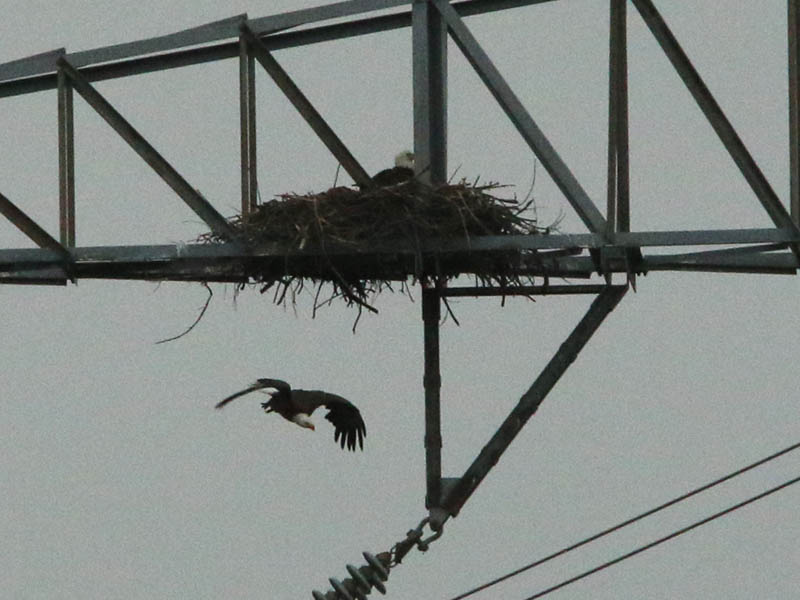
Back at the nest the big female stood up and stretched her legs. Again we expected that we were about to see an eaglet feeding, and again we were wrong. But the female did move up onto the rim of the nest and this gave us our first and only clear look at one of the eaglets as the young bird struggled for its parent’s attention. Reportedly there are two eaglets in this nest, but at the present time I can only verify one.



Then from behind the treeline, a large fast moving bird caught our attention as it headed in the direction of the nest tower. I swung my camera around and started taking pictures. I was surprised to discover that this bird was not a Bald Eagle, but instead it was a Crested Caracara moving as if its life depended on it. The reason why soon became clear as the male Bald Eagle appeared on the scene hot on the heels of the fleeing caracara.


In a flash the two birds passed out of sight behind the western treeline. But the Bald Eagle soon broke off the chase and returned to the tower, landing near the top. The female remained on the rim of the nest far below. Now again the eagles seemed to engage in indecisiveness, and they stayed in this configuration for an extended period of time—nearly an hour and a half. During this time period the eaglet(s) remained unattended even after a light rain began to fall.






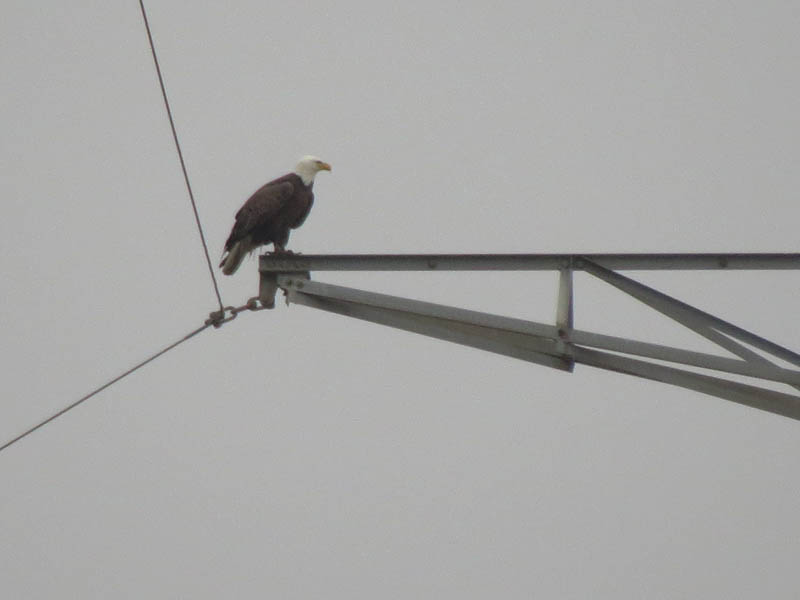


Then without warning the male eagle launched from the tower top and flew off toward the John Bunker Sands Wetland Center. The female let out a loud call and immediately followed after. I was left with the impression that the female felt she was about to be cheated out of a long overdue break, and was not going to take it sitting down.


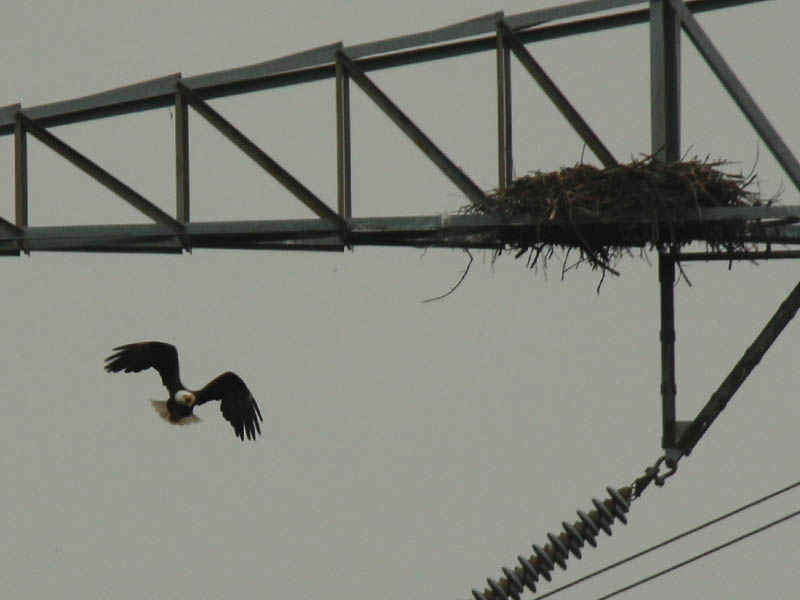



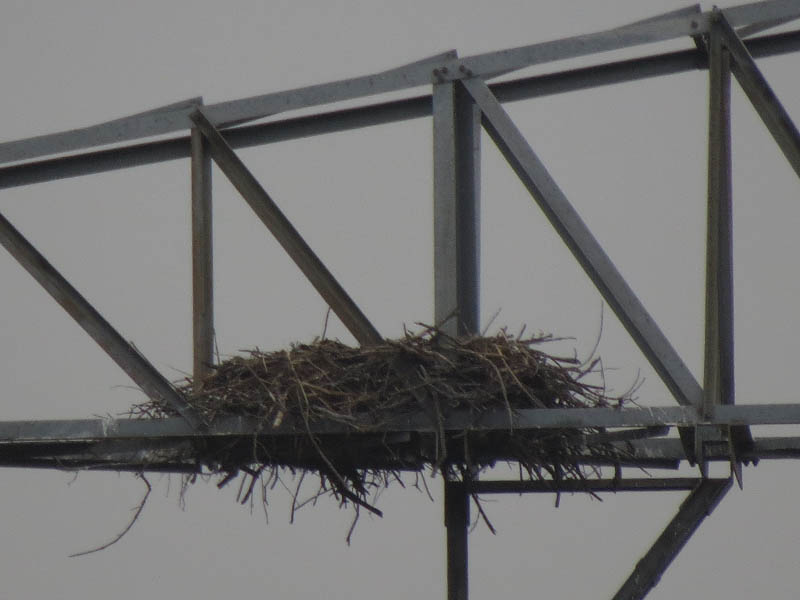
Soon the two birds were back flying together high over the tower. Both eagles eventually landed on at the tower’s top. There the two adult birds stayed for another hour, extending the time the eaglet(s) were left unattended to a full two hours.
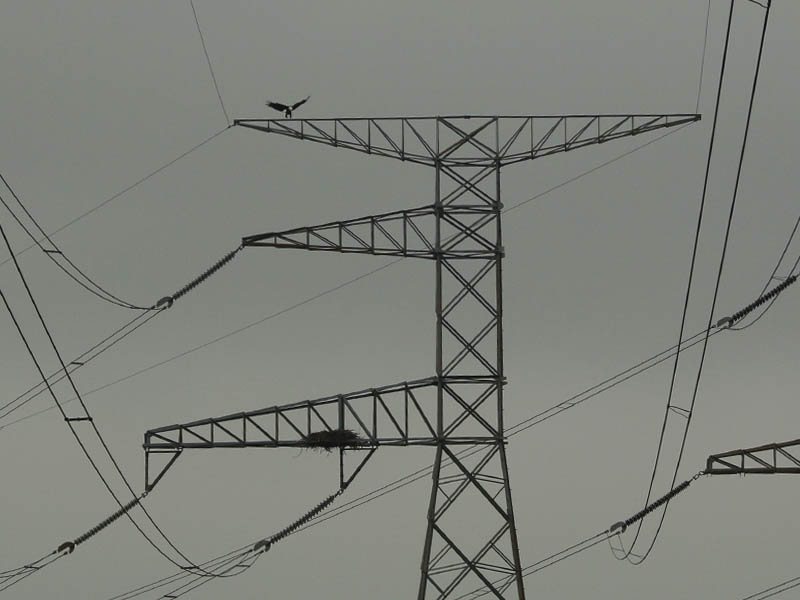





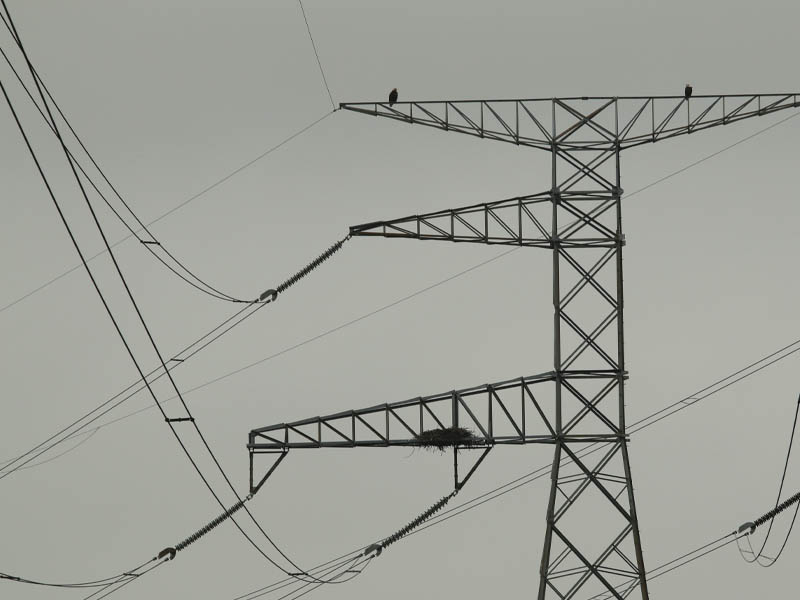
That is how we left the situation. After being on site for over four hours it was time for us to head home.

NOTE: This post is part of a continuing series of observations: [ First | << Prev | Next >>]






